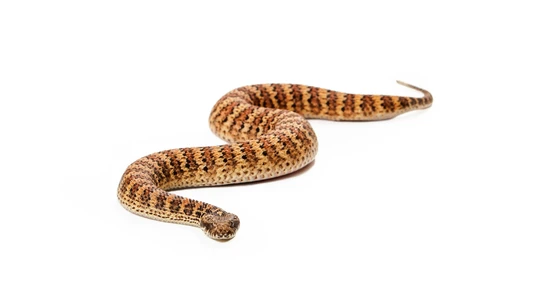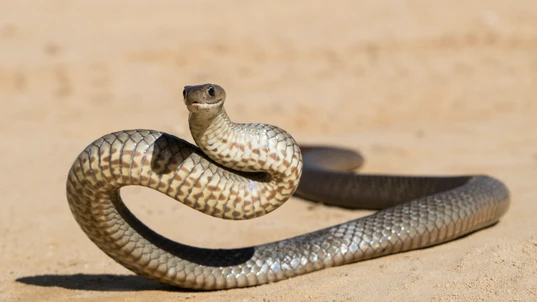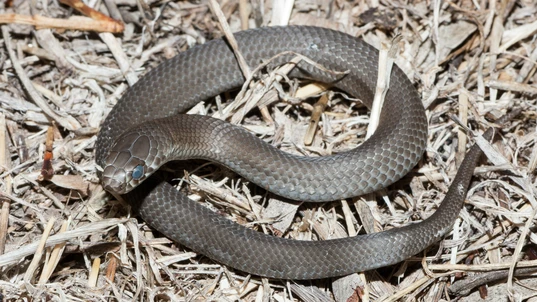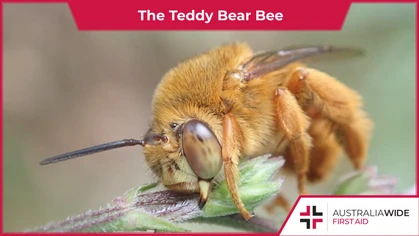First Aid for the Snakes of South Australia

Bites and Stings

Several venomous snake species can be found in residential areas throughout South Australia. While these snakes will never go out of their way to attack you, their venom can cause dangerous symptoms ranging from bleeding and nausea to irregular heart beat and death.
Several venomous snake species can be found in residential areas throughout South Australia. Residential areas might seem like an unlikely sanctuary for snakes - however, they provide shelter, water, and a surplus of food in the form of rats and mice. And while snakes will never go out of their way to attack you, their venom can cause dangerous symptoms ranging from bleeding and nausea to irregular heart beat and death. In this article, we will describe the characteristics and distribution of three of the most dangerous snakes common to South Australia. We also cover snake bites in our general and childcare first aid courses. We have training locations throughout South Australia, including Adelaide, and in every other state, capital city, and major town in Australia.
Death adders have toxic venom that can disrupt the function of the nervous system. Prior to the introduction of anti venom, 60% of bites to humans were fatal.
Common death adder
The Common death adder (Acanthophis antarcticus) has the following characteristics:- A stocky body that generally ranges from 40 - 100 cm long
- A triangular, arrow-shaped head
- The scales on their back can be grey to reddish-brown and marked with lighter bands

Eastern brown snakes have highly potent venom that can disrupt the function of nerve cells, cardiac cells, and the kidneys. However, like other snakes, they are reluctant to bite people and will only adopt a defensive 'S-shaped' strike position when under significant threat.
Eastern brown snake
The Eastern brown snake (Pseudonaja textilis) has the following characteristics:- A slender to moderately built body that is generally 1.5 m long but can grow up to 2 m
- Smooth, slightly glossy scales on their back that can be almost any shade of brown, from near black to light tan
- Their underside is generally cream in colour with pinkish-orange blotches

Pygmy copperheads have powerful venom that can attack nerve cells, red blood cells, and other living cells. However, they are generally secretive and will attempt to dissuade any intruders by flattening their body and thrashing or flicking about, though with their mouth closed.
Pygmy copperhead snake
The Pygmy copperhead snake (Austrelaps labialis) has the following characteristics:- A muscular, moderately robust body that can reach a total length of 115 cm
- Semi-glossy scales on their back that are uniformly grey brown to blackish in colour, sometimes with a brownish or orange flush. They also have a coppery-brown colouration on their head
- The lowermost rows of scales on their sides are enlarged and typically paler in colour, while their belly colour can range from cream to grey
First aid
As it can be difficult to positively identify different snake species, all snake bites should be treated as a medical emergency. If you are bitten by a snake, call Triple Zero (000) for an ambulance and apply the Pressure Immobilisation Technique. It is important to remember, snake bites rarely result in fatalities due to the effectiveness of modern day anti venoms. Likewise, snakes will never go out of their way to attack you - they will generally only bite people when they feel threatened or provoked. As such, if you encounter a snake, do not attempt to approach, capture, or kill it. If you need a snake relocated from your home, contact a snake catcher instead.Final thoughts
To learn more about identifying and treating snake bites, check out our Resource Library. We also cover snake bites in our general and childcare first aid courses. We have training locations throughout South Australia, including Adelaide, and in every other state, capital city, and major town in Australia. Head to our Locations page to enrol in a course near you today!
Originally published at
https://www.australiawidefirstaid.com.au/resources/snakes-of-south-australia
as part of the Australia Wide First Aid Articles Library









